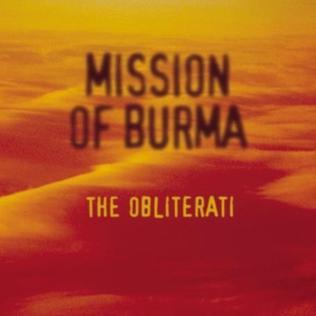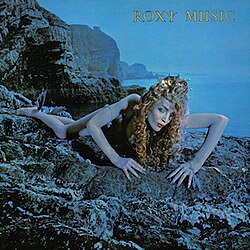THE BEST GREATEST HITS ALBUMS ARE USUALLY THE SHORTEST
Do you need a greatest hits album from a band that only made three records and never had any greatest hits? Does the Pope shit in the woods?
Mcluskyism is the best post-hardcore album of the 2000s. Top to bottom, minute by minute, it beats everything else on offer: Fugazi’s Argument, At The Drive-In’s Relationship of Command, Unwound’s Leaves Turn Inside You, Gospel’s The Moon is a Dead World, Fucked Up’s The Chemistry of Common Life, Cave In’s Jupiter…Mcluskyism is better. It even beats 2002’s Mclusky Do Dallas, the band’s own masterwork, with which it shares four of its 12 tracks.
Mcluskyism takes the meatiest slabs from the band’s three studio albums, loops in a couple non-LP singles, and burns the world down for 29 minutes and 48 seconds. There are no slow songs, no genre experiments, no change-ups for variety’s sake. There’s nothing to prove the band’s “range.” There are no piano etudes, acoustic guitars, or ballads about the singer’s girlfriend.
There are no bad, mediocre, or just decent songs on Mcluskyism. In fact, there’s not a bum second on the album.
Mcluskyism is not Bacardi 151, it’s Everclear.
Every time I listen to Mcluskyism – which is one of my most played albums released this millennium – it leaves me grinning like an idiot.
Is it sacrilege that my favorite Mclusky album is that bête noire of record collectors everywhere, the greatest hit album? I dunno, does a bear shit on the Pope?
I understand why greatest hits, best ofs, and odds ‘n’ sods collections are reviled among music fans. In the past they were a way for a label to grab some cash from fans who’ll pay full sticker price for two new tracks and ten they already own. Or they were a way for a band to fulfill a contract with a label without making any new music.
Often they were budget collections of hits that could still be found on classic rock radio, paltry sets that would only satiate the most casual fans (looking at you, 20th Century Masters Millennium Collections).
Or they would smash incongruent eras of a band together. Al Green singing sacred hymns AND profane fuck songs? Who is that for? Peter Gabriel and Phil Collins on the same disc? Pretty sure not even the most equitable Genesis fan would appreciate that. And I guarantee no Van Halen fan would like Diamond Dave and Sammy Hagar sharing a tracklist ( heaven forbid you squeeze Gary Cherone in there). If a band is around for a while and evolves even an iota, there’s a good chance many of its best songs don’t fit together.
The worst “greatest hits” of all condense decades into forty minutes and then knock the tracks out of chronological order. There’s nothing worse than hearing the height of ‘50s technology, the Hammond B-3, clashing with the height of ‘80s tech, the Yamaha DX7. Have you ever heard one of The Beatles’ first songs played immediately after one of their last ones? Play “Love Me Do” after you play “I Want You (She’s So Heavy).” It’s like traveling back in time 50 years, and it was only seven!
Besides, almost all greatest hits and best of albums get padded out with a couple tracks that aren’t “great”, “best”, or “hits” by any stretch of the imagination. (And sometimes, even if they are hits, you have to remember that the record-buying public can have pretty dreadful taste. Chuck Berry’s biggest Billboard hit was his dreadful #1 cover of “My-Ding-a-Ling,” a song just as juvenile as you could fear, and an interesting choice for a nearly 50-year-old artist who was imprisoned for sex stuff a decade earlier. It’s track ten on the very mediocre 20th Century Masters: Millennium Collection Best of Chuck Berry.)
But there are good greatest hits, best ofs, and odds ‘n’ sods. The Rolling Stones’ Singles Collection: The London Years compiles every single from their first seven years, charts an impressive evolution, showcases interesting stylistic cul–de-sacs (The Rolling LSDones of “She’s a Rainbow”), and collects banging non-LP cuts (“Jumpin’ Jack Flash”).
For an odd ‘n’ ends collection, Nirvana’s Incesticide is almost as essential as any of their proper albums (or their Hall of Fame MTV Unplugged), because it shows the goofy, funny side of a band that is often misremembered for being exclusively dour and depressing. It also gave them an opportunity to cheerlead for their many underground influences (and certainly earned the horny Scottish punks The Vaselines their biggest ever payday).
But my favorite type of best of isn’t necessarily a clearinghouse for non-LP hits or a collection of b-sides, marginalia, and usually pretty generic and/or terrible cover songs. It is a smoking hot slab of vinyl from a band’s best years super-concentrated into 40 minutes. Hence: Mcluskyism, New Order’s Substance, Buzzcocks’ Singles Going Steady, Green Day’s International Superhits, Al Green’s Greatest Hits (1975), Aerosmith’s Greatest Hits (1980), Bob Marley’s Legend, and, a personal favorite of mine, Sly and the Family Stone’s 1970 Greatest Hits.
Now is Sly and the Family Stone’s Greatest Hits definitive? Hell no. It came out before their most important album, the narcotic hippie hangover of 1970’s There’s a Riot Goin’ On, in which Sly’s many-gendered, multi-racial utopianism, curdled into a druggy, deep funk malaise. But there’s none of that darkness in the 12 incredible tracks from Greatest Hits. Greatest Hits is a compilation of the best moments of the best party late ‘60s San Francisco had to offer. It’s a perfect distillation of their first three albums, a foundation of funk music, and one of the most joyous albums of all time. Throw it on at a party. No one will ask for your aux cable.







